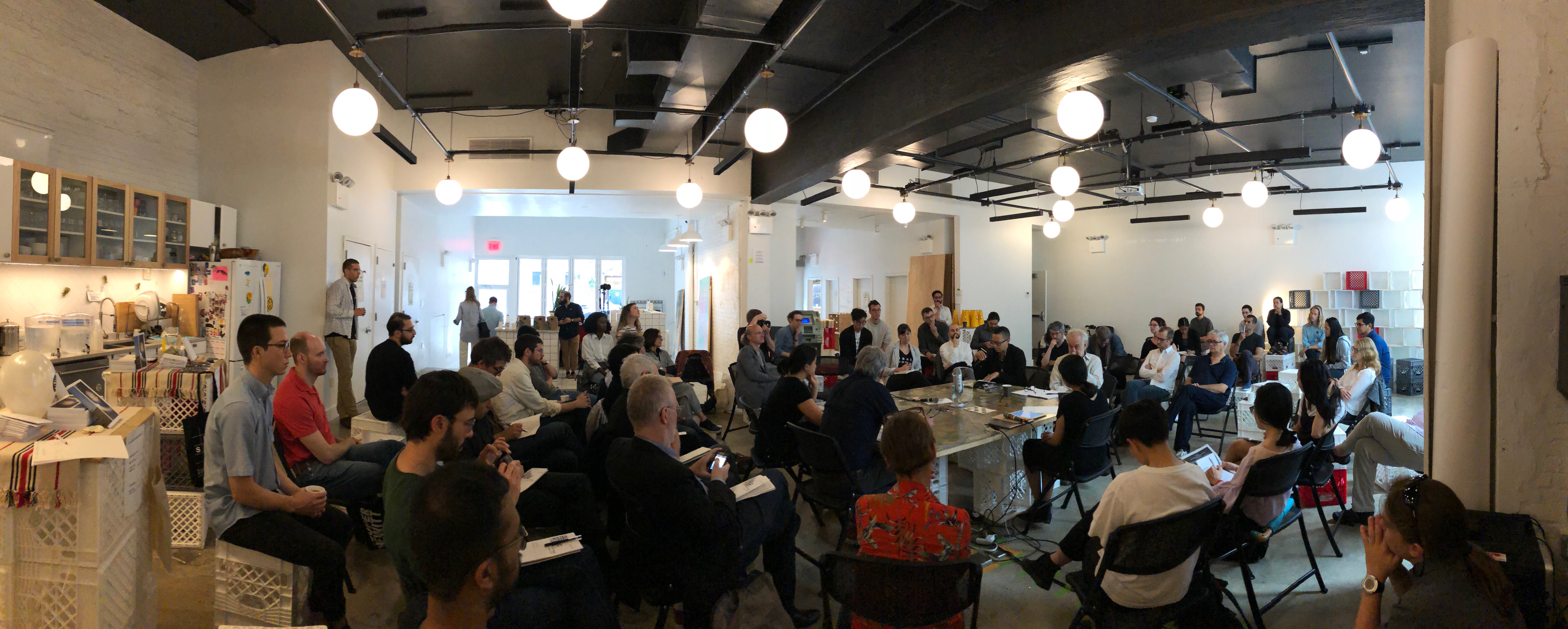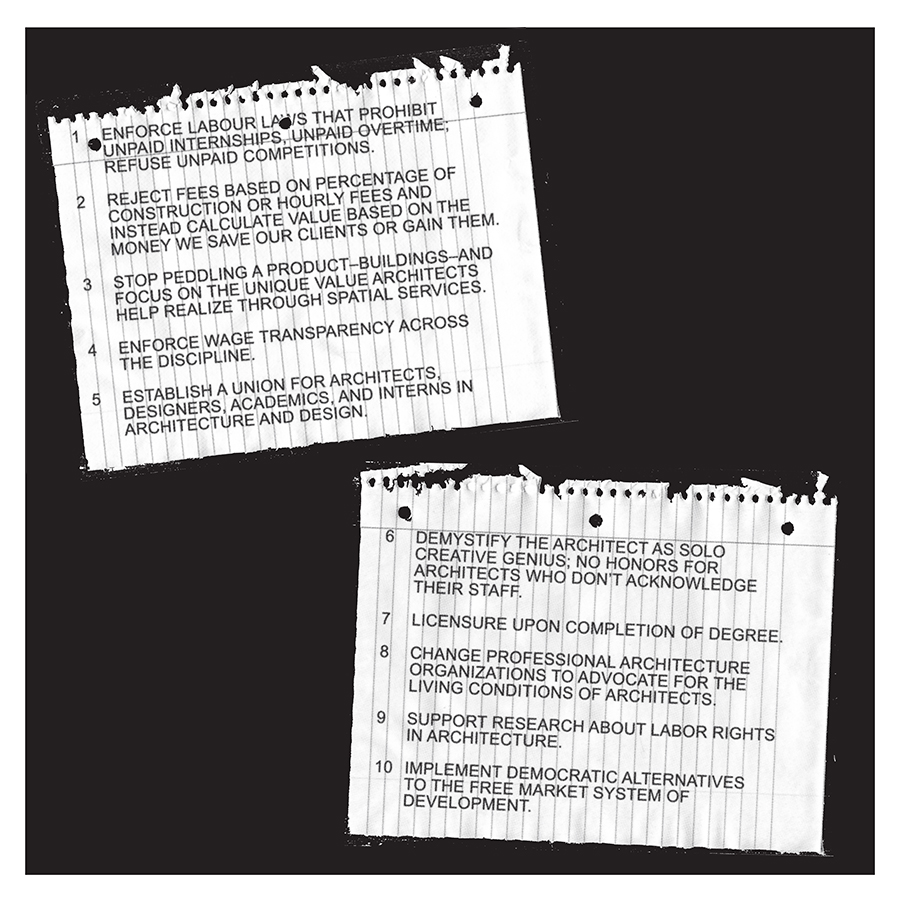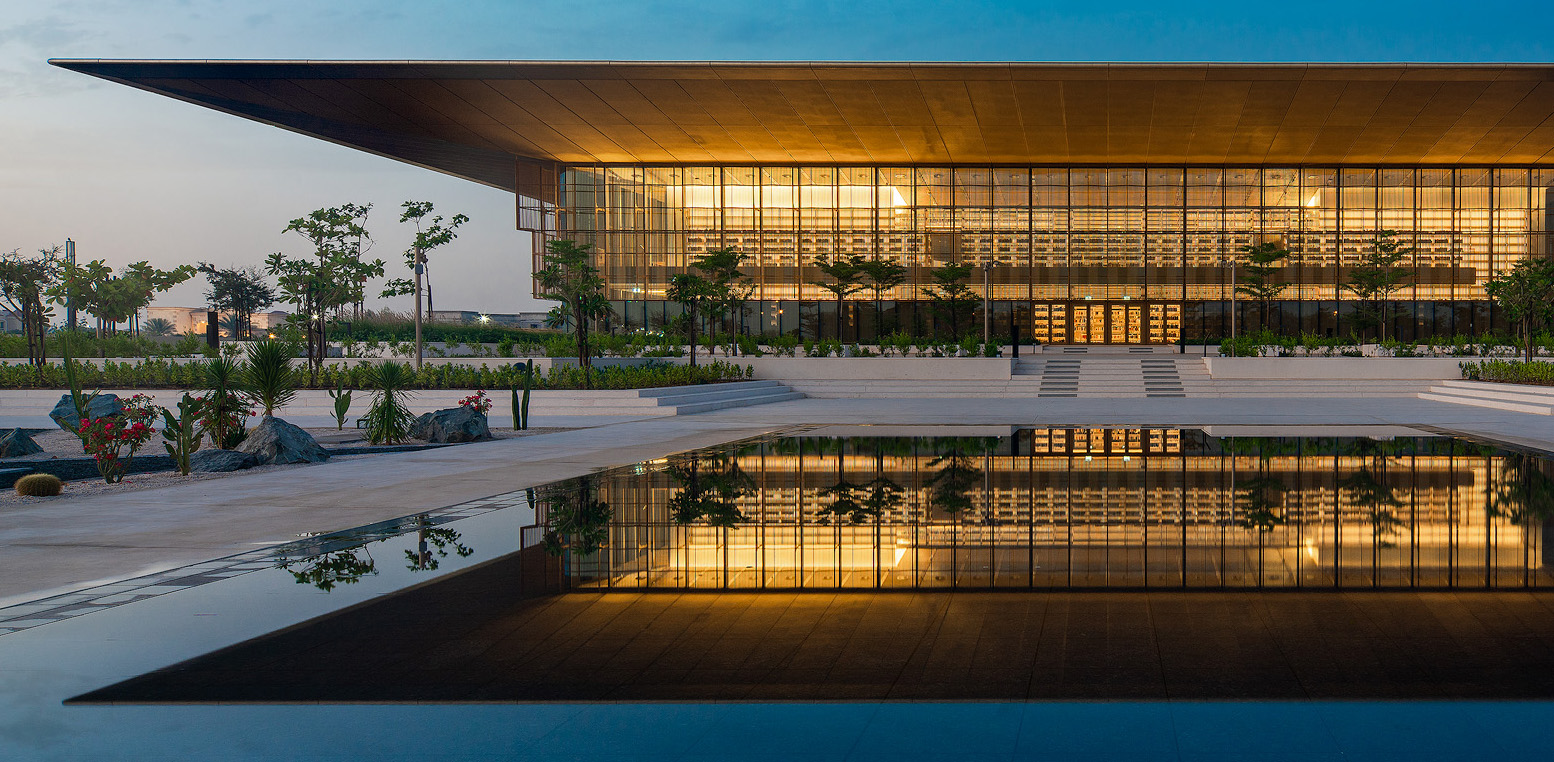Architects: Want to have your project featured? Showcase your work by uploading projects to Architizer and sign up for our inspirational newsletters.
In spite of long hours and lagging wages, only a tiny fraction of America’s over 100,000 licensed architects are union members. While in popular imagination, unions are most often associated with manufacturing, white collar employees in a wide variety of service fields led a recent wave of labor organizing, from graduate students to grade school teachers, and The New Yorker writers to nurses. The Architecture Lobby, a non-profit founded in 2013, hopes to add architects and designers to that list.
Historically, architecture unions have been few and far between in the United States. Where existent, these unions almost exclusively serve public sector employees and are affiliated with broader unions representing other technical city workers. This is not the case in the construction and building trades where, by contrast, 12.7% of private workers are unionized according to the Bureau of Labor Statistics. Such unions are extensive and represent a variety of occupations including bricklayers, electricians, and even elevator constructors.

National Think-In, New York City, 2018. Image courtesy of The Architecture Lobby
Creative Unions
Various reasons have been offered for the low unionization of creative workers, including atomization, a desire for independence, and the myth of the lone genius. But just like other workers, architects and designers stand to benefit from the job stability and fair compensation that unions demand from employers. Similar to other fields, the right of architecture practitioners and professors to unionize is protected by the National Labor Relations Act, New Deal legislation passed in 1935.
Generally, the right to unionize is exercised via an election regulated by the government to determine if the majority of workers endorse formation of a union or, less commonly, through voluntary recognition by the employer. After unionization, union representatives attempt to negotiate a contract, formally known as a collective bargaining agreement, because it represents all employees (including those who are not members of the union). Formation of a union bestows special legal rights, such as strikes, that help workers increase pressure while negotiating. The first contract is a key step and when facing hostile management it is not uncommon for fledgling unions to falter before reaching this critical milestone.
A Possible Model?
Six years ago, digital media writers were in a similar situation to architects, unions almost nonexistent, at-will employment common, and health-care premiums rising. A watershed moment came in 2015, when workers at Gawker Media voted to form a union. Within a year, a contract was signed raising the minimum salary floor to $50,000, securing 3% annual pay increases, and equal wages for full-time contractors. Following their success, other high-profiles sites and publications quickly followed. Vice Media and The New Yorker formed unions and successfully negotiated contracts.
Increased minimum salaries and guaranteed annual pay increases helped to ignite union efforts in egregiously exploitative workplaces like Condé Nast, long known for paying writers meager wages in one of the country’s most expensive cities. The practical benefits are clear, the recently signed The New Yorker contract pledges a minimum salary of $60,000 by April 2023, near doubling wages of the lowest paid employees. According to the The Lobby, architects could also expect to see “[higher] wages, paid time off, and health benefits” in a unionized workplace.

The Architecture Lobby Manifesto. Image courtesy of The Architecture Lobby
Changing the Culture
However, for the Lobby, unions promise far more than material benefits. Unions could “negotiate for more equitable hiring practices and set clear paths to advancement in the workplace. These benefits would provide greater overall stability to individuals, as well as establish more equitable working standards for the industry as a whole. In addition, unions have political power, and can be mobilized to take positions in service of specific political goals, like advocating for housing and climate policies.”
These benefits are key because unions have a different constituency and legal rights than the professional association for architects, the American Institute of Architects. According to the Lobby, the AIA has left the “constituency of workers in architecture historically unacknowledged.” As the AIA functions as a lobby group, it often prioritizes the views of management while overlooking the needs of young architects, interns, and architecture students. A union representing architectural workers could act on corresponding political and economic priorities.
Future Outlook
Many challenges impede immediate formation of an architects’ union. States with major construction industries such as Texas and Florida have right-to-work to work laws that obstruct the ability of a union to effectively represent an entire workplace. The PRO Act, recently passed by the House, could help yield greater change. “With the PRO Act, employees who seek to organize their workplaces would not be able to be fired for seeking to form a union.” The firing of union activists has been a notable challenge in the museum industry, which shares with architecture precarious employment and an extended and expensive training process.
Outside of forming a union, the Lobby has been influential in education, echoing its foundation by Yale Professor Peggy Deamer. Campuses across the country have chapters that advocate for a frame shift, moving away from a culture that idealizes all-nighters and the architect as “solo creative genius” and Lobby members have written extensively on labor and political issues in the architecture press. While there is not yet a union for architects, the Lobby is playing the long game, hoping that building consciousness on the labor of architecture—from academy to atelier—will help to yield greater transformation in the field.
Comment on behalf of The Architecture Lobby was provided by Maya Porath, Priyanka Shah, and Patrick Daurio.
Architects: Want to have your project featured? Showcase your work by uploading projects to Architizer and sign up for our inspirational newsletters.




